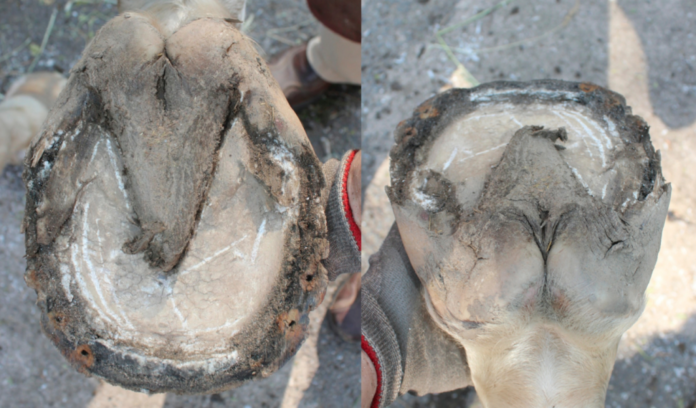A prolapsed frog is where the frog, sensitive frog, and digital cushion have fallen below the height of the wall in the heels, basically the heel arch collapses. This is more than just a low heeled horse or overgrown frog that needs trimming. It is an actual displacement of the soft tissue in the back of the foot.
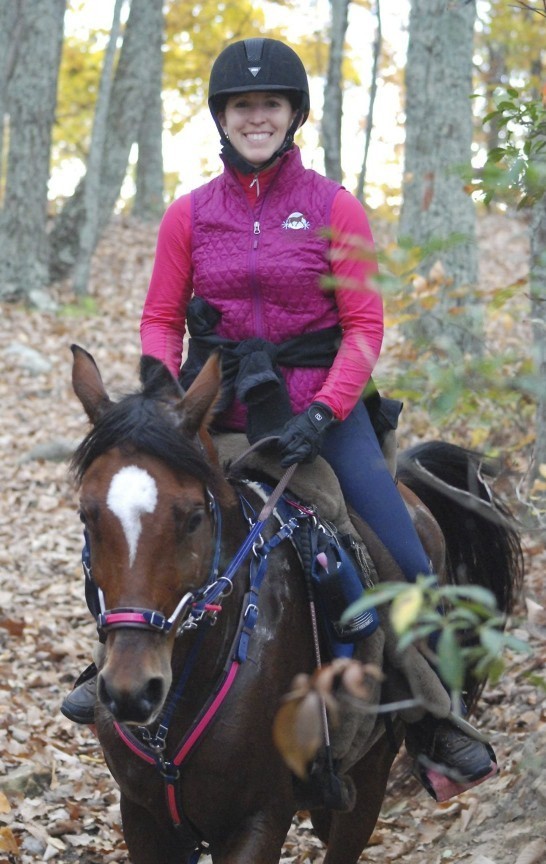
This horse’s left front frog is touching the ground, even though his shoe has a two degree wedge built into it:

There are many reasons why I believe a frog might prolapse:
- Trimming heels to the back of the frog regardless of Palmar P3 Angle, then concurrently trimming to a long distorted toe.
- Wet environment making the horn more deformable and susceptible to excessive load in the back of the foot.
- Disease in the frog.
- Wedging to correct low heels without also supporting the frog and caudal structures at the same time.
Other signs that go with a foot with a prolapsed frog:
- Landing toe first.
- Positive to hoof testers on the frog.
- Weak digital cushion that does not fill the space between the lateral cartilage so lateral cartilages will appear more upright.
- From the sole view: laid over, weak bars and heels that fold over. The horse is often standing on the rolled over outer wall, and not the actual heel purchase. When trimmed the horse will also typically have corns under the folded heels.
- When viewing the foot from the side: folding of the horn tubules at the heels, quarter bulge, then a dip in the wall going towards the toe.
- Low dorsal wall angle.
- Broken back hoof pastern axis.
- Chronic heel abscesses.
- Negative plane Palmar P3 Angle.
Here are some examples of horses with prolapsed frogs. The feet are untrimmed, any rasping was done to clean off glue for before-trim photographs. Notice the heels of these horses do not touch the ground. The frog is taller than the heels so is therefore hitting the ground before the heel purchase. Each of these horses were also very sore to pressure on the frog and quite lame when walking:
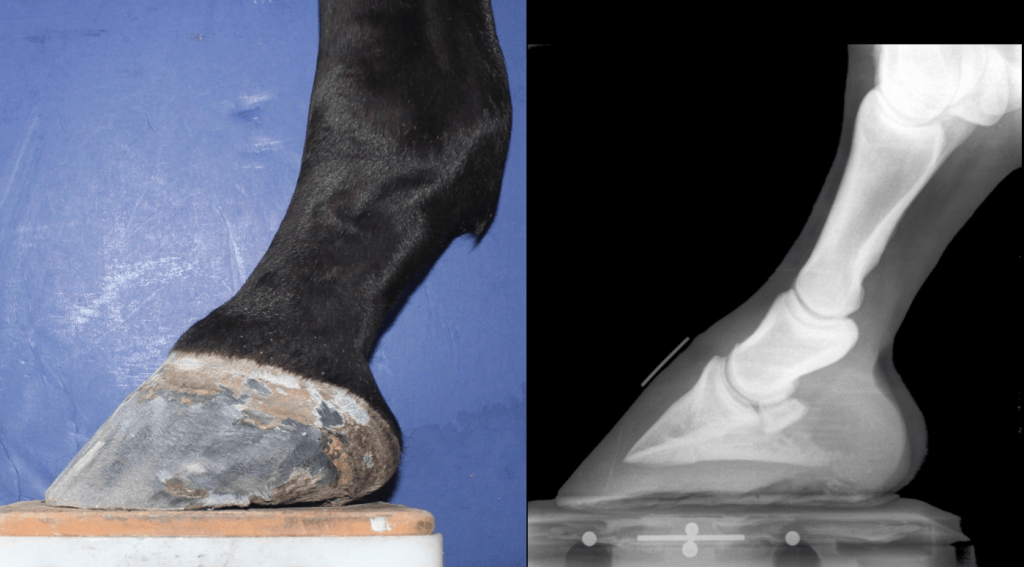
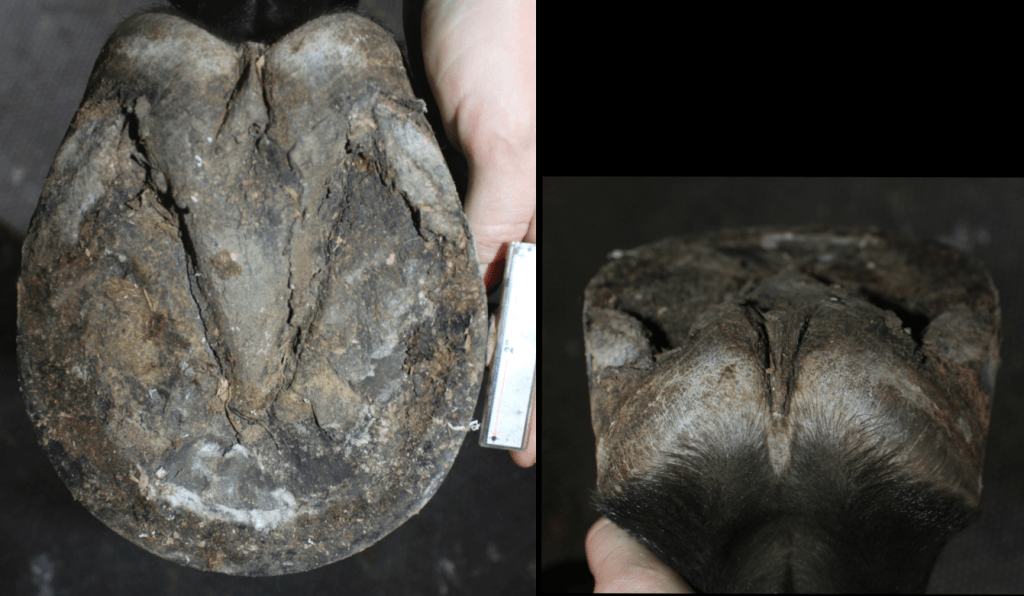
Notice the corn revealed in this foot:
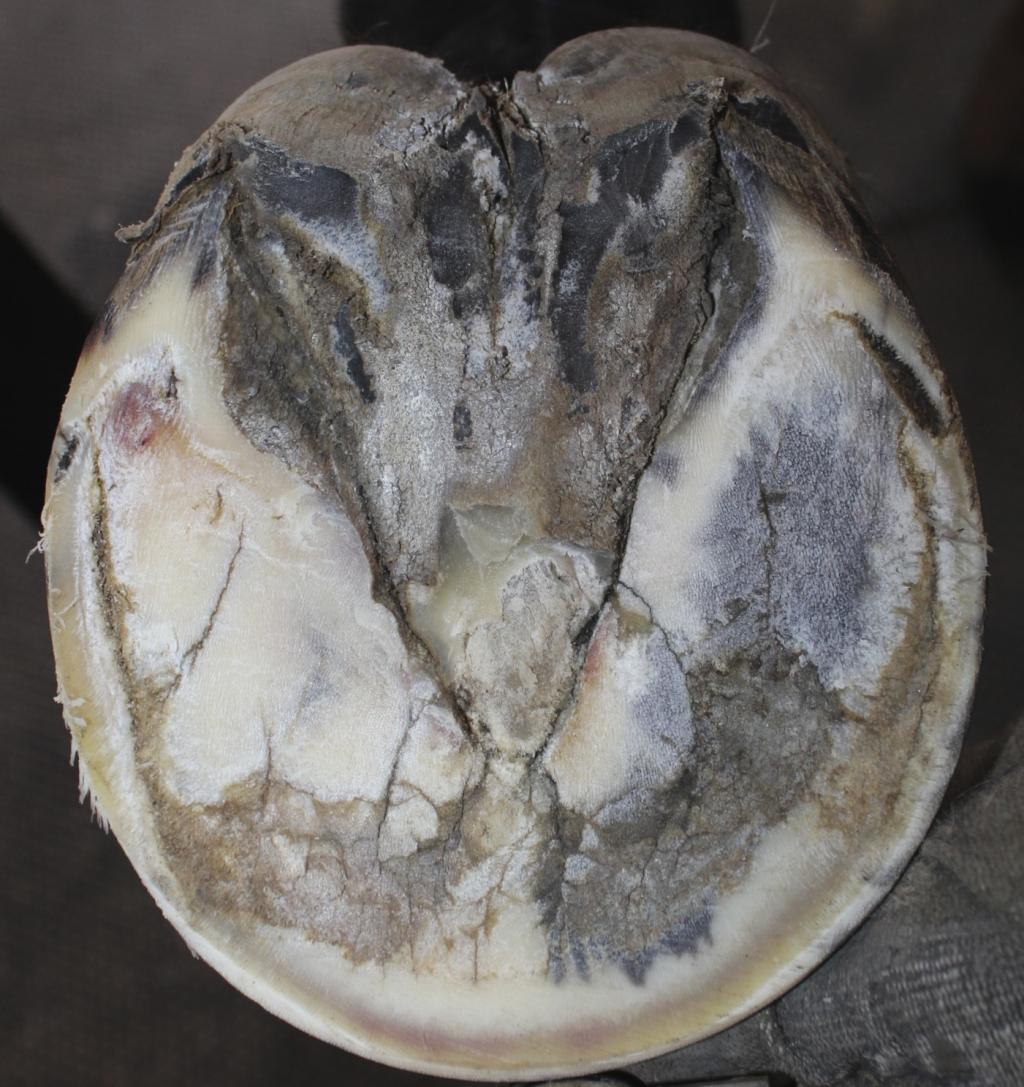
Notice the bulge in the heel quarter on this foot combined with the dip in the wall going toward the toe:
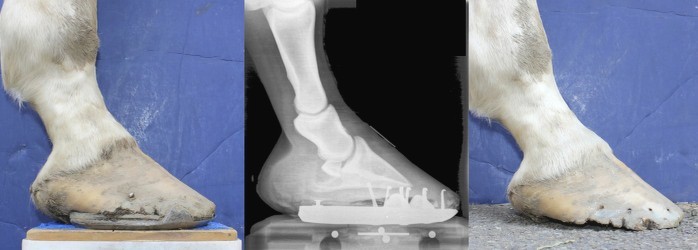
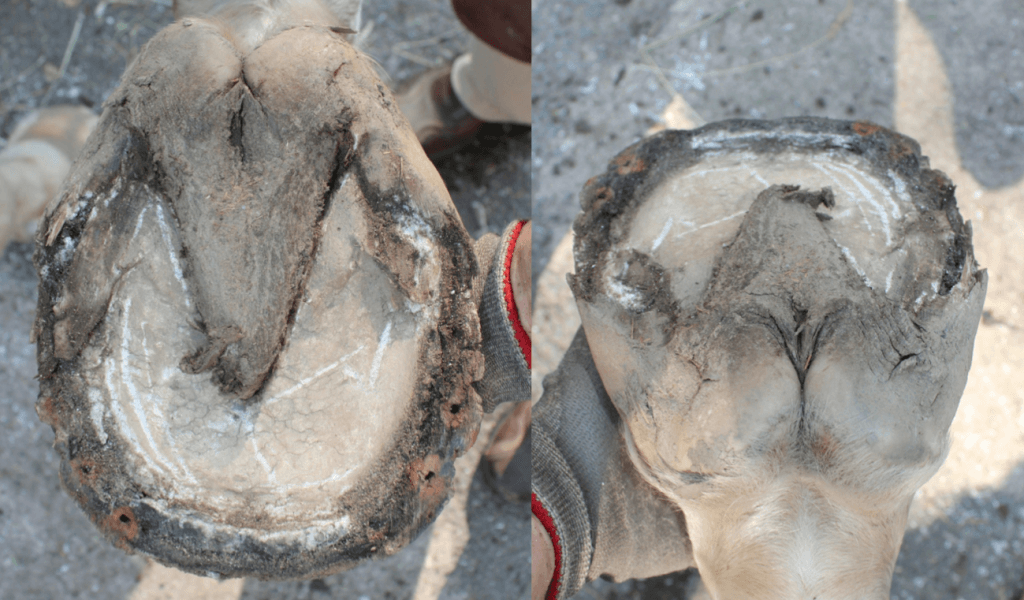
When I help a horse with a prolapsed frog, I aim to establish my hoof guidelines, ideally through the trim:
- 3-8 degree palmar P3 angle: the angle of the bottom of the coffin bone in relation to the ground.
- 50/50 base of support from toe to heel around the center of rotation of the hoof capsule.
- Capsular and phalangeal alignment, with a straight hoof-pastern axis.
- Minimizing flare and distortion in the hoof capsule.
After establishing hoof guidelines, we need time for the heels to grow straighter and in the correct position, and the frog and soft tissue to shift back into place. It is important to build prosthetic heel of some kind until the wall grows back into place. Here is an example of another horse I’ve worked on recently.
Before trim:
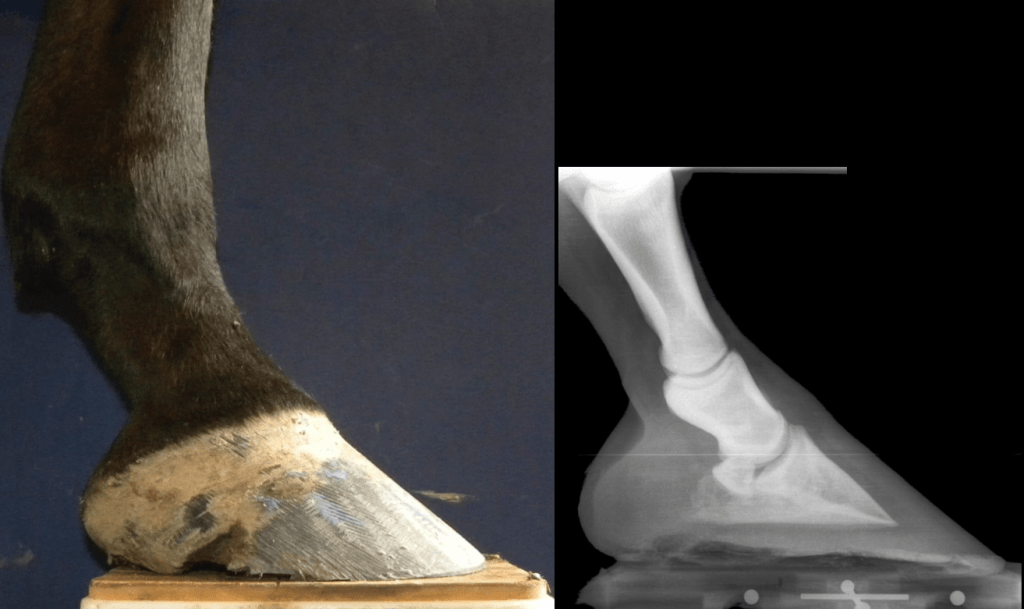
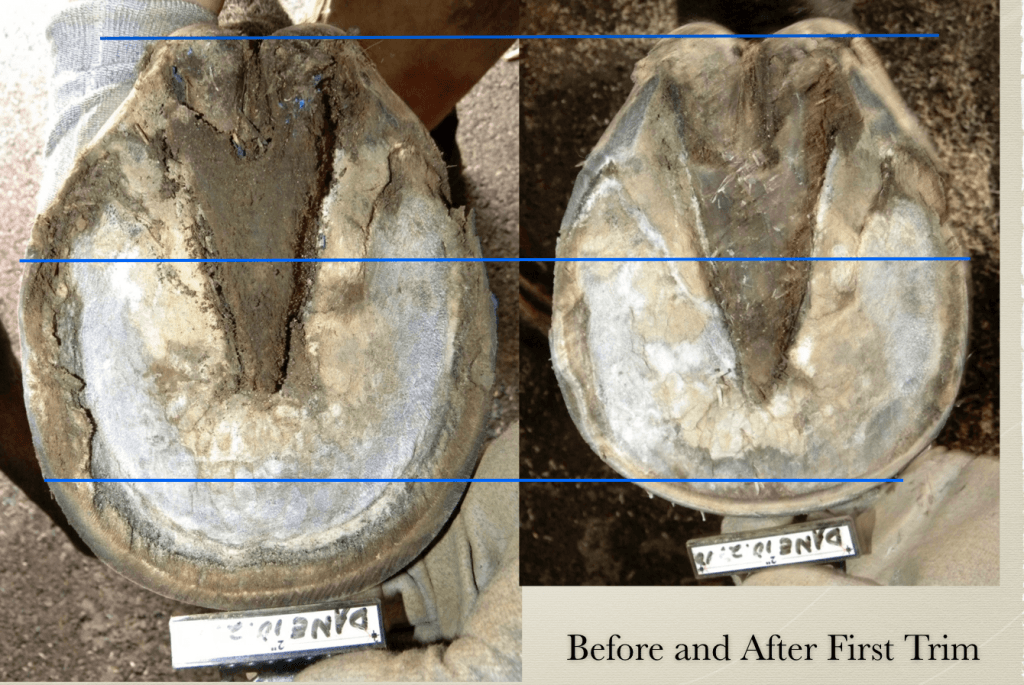
After trim, notice the foot is much closer to my hoof guidelines. All of my rehabilitative trimming on horses with prolapsed frogs is done using radiographs as a measurement guide so I can be accurate in achieving my goals and do no harm:
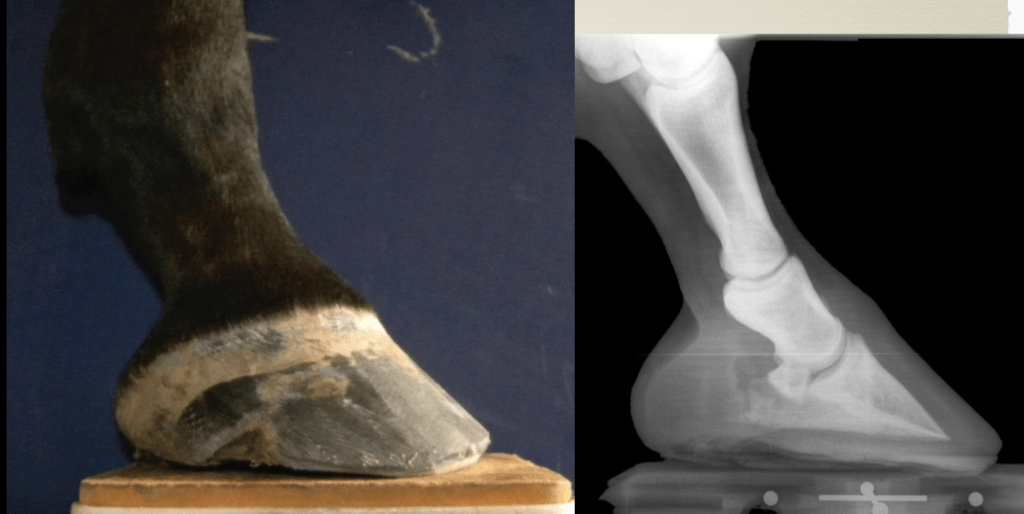
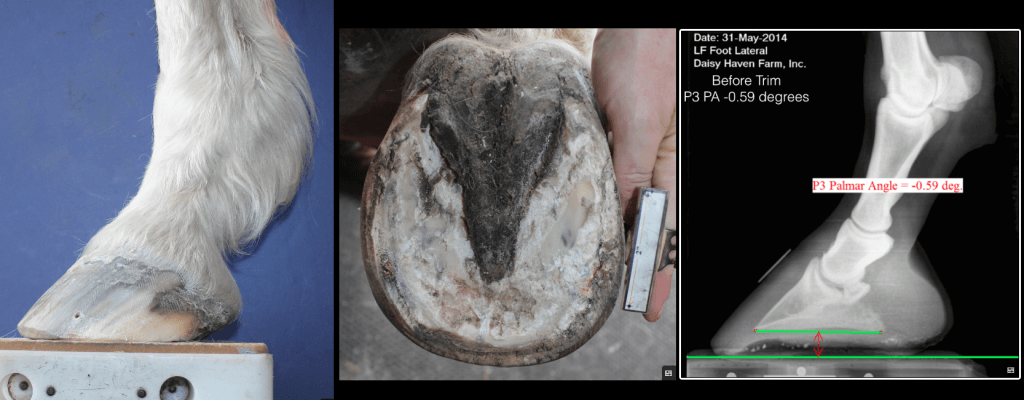

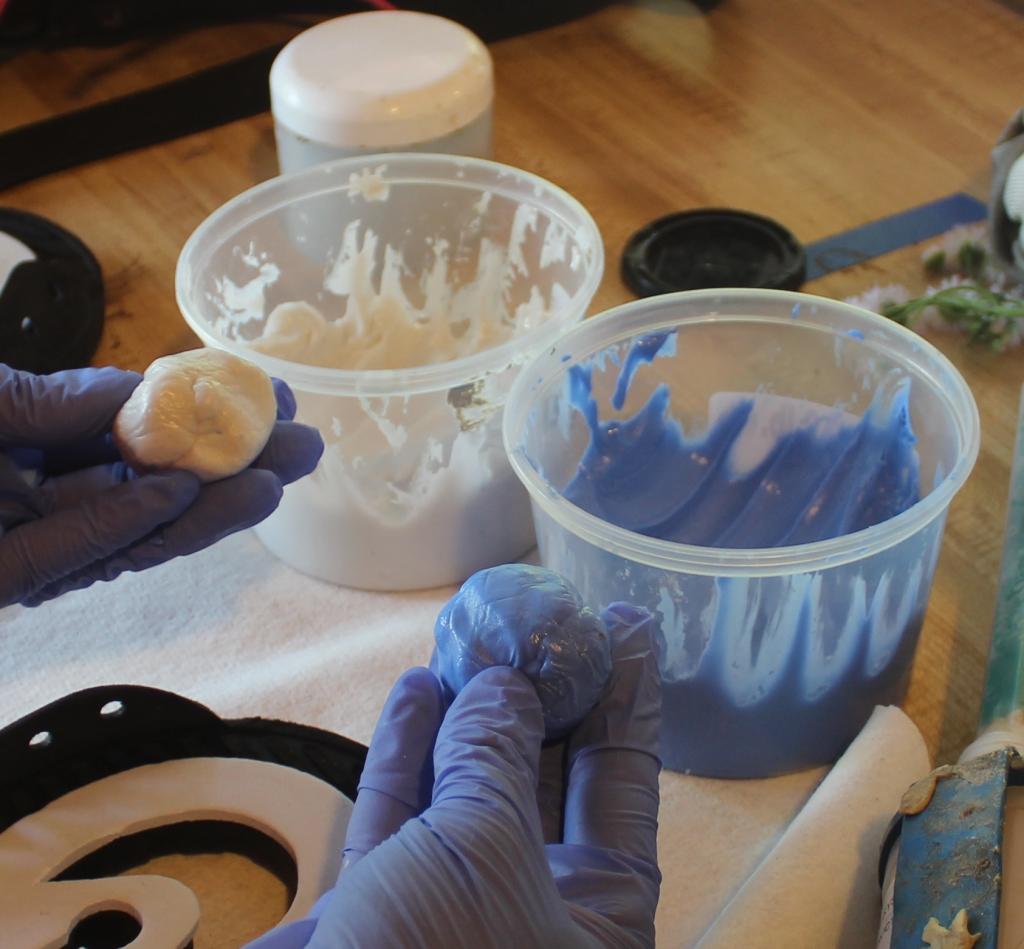
Whichever method I use, typically horses only need prosthetic wall extension for the first couple of trims. The keys to quickly helping horses with prolapsed frogs are:
- Rebalance the foot in the trim, ideally using radiographs as your guide.
- Disinfect any frog or heel infection.
- Protect the frog by adding prosthetic heel until the horse can grow the wall back.


